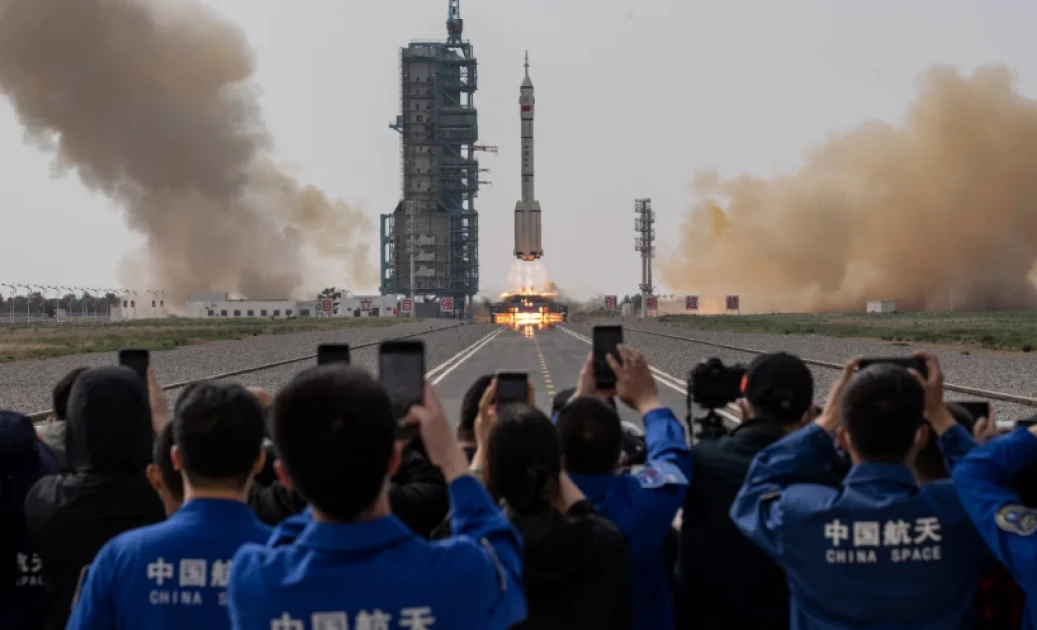Chinese officials provided new details on Wednesday regarding their plans for a manned lunar mission, as China aims to become the second country to land citizens on the moon. Zhang Hailian, the deputy chief engineer of the China Manned Space Agency (CMSA), presented the preliminary plan during an aerospace summit in Wuhan. The mission, scheduled to occur before 2030, is part of a larger project to establish a lunar research station, involving tasks such as constructing the facility, conducting moon exploration, and performing various experiments.
According to the state-run Global Times, the mission will involve two launch vehicles, one carrying a moon surface lander and the other a manned spacecraft. These two components will rendezvous in lunar orbit before docking with each other. Subsequently, the Chinese astronauts aboard the spacecraft will transfer to the lander, which will be used to descend to the moon’s surface. During their time on the moon, the astronauts will collect samples and conduct scientific exploration. They will then depart on the lander and reunite with the spacecraft waiting in orbit, which will transport them back to Earth.
In preparation for the mission, Chinese researchers are actively developing all the necessary equipment, including moon suits, manned lunar rovers, manned spaceships, and moon landers. The exact number of astronauts that China intends to send to the moon was not specified in the state media reports.
This lunar mission represents the latest advancement in China’s space program, which has achieved significant milestones in recent years. Although China entered the space race relatively late, it has rapidly caught up. In 2013, China successfully landed a rover on the moon, becoming the third country to accomplish this feat. Chinese leader Xi Jinping emphasized the space program as part of China’s broader goal to strengthen the nation. Under Xi’s leadership, China has invested billions of dollars in its ambitious space program, including the development of its own Tiangong space station, completed in November. As the International Space Station (ISS) is expected to conclude operations by 2030, China’s Tiangong could potentially become the sole operational orbital outpost. China has expressed its willingness to collaborate with international partners and has already facilitated experiments from other countries on its space station.




